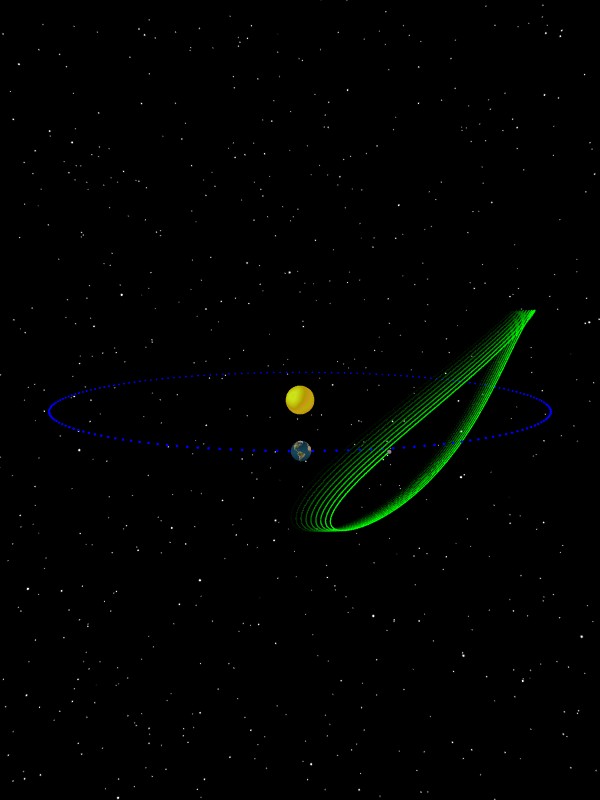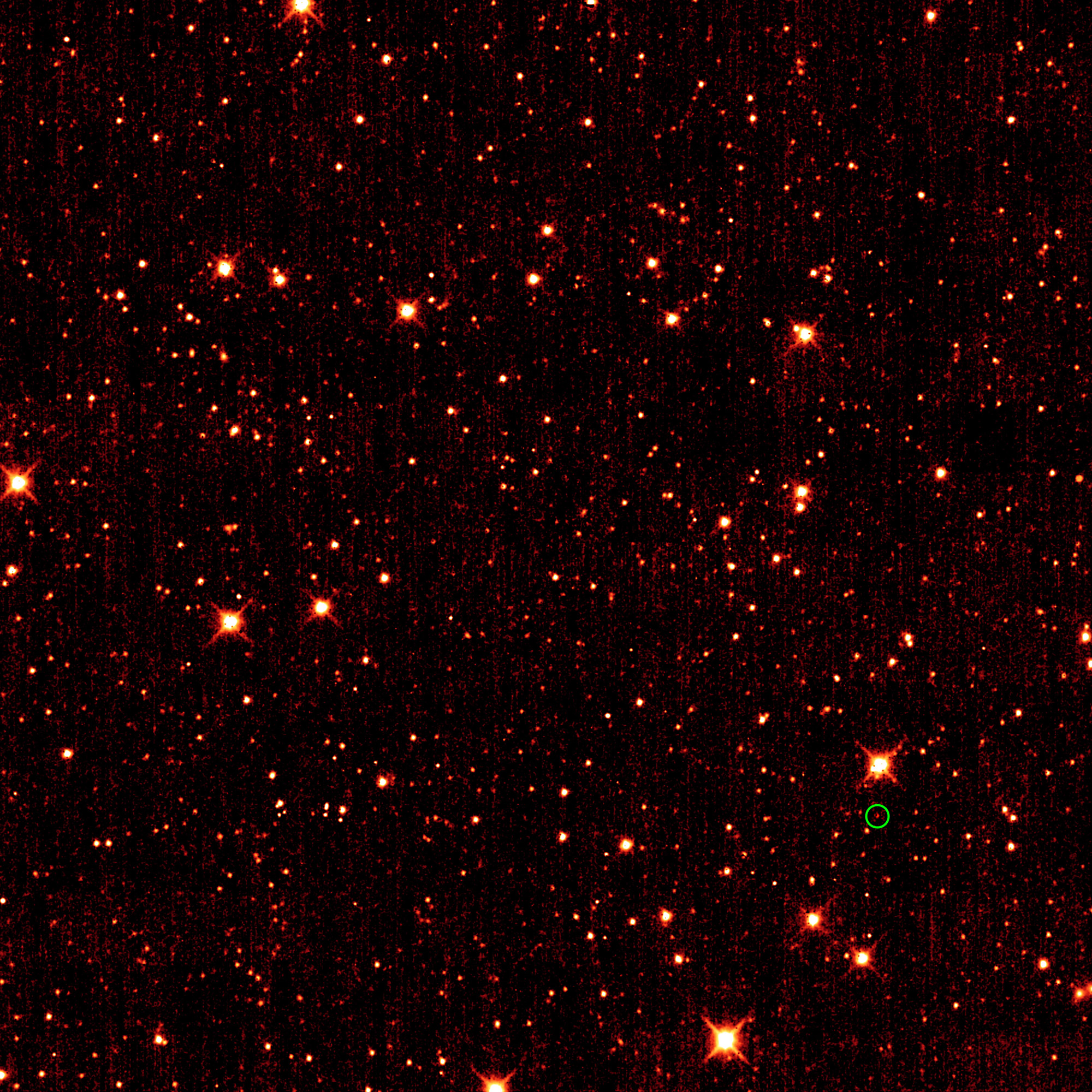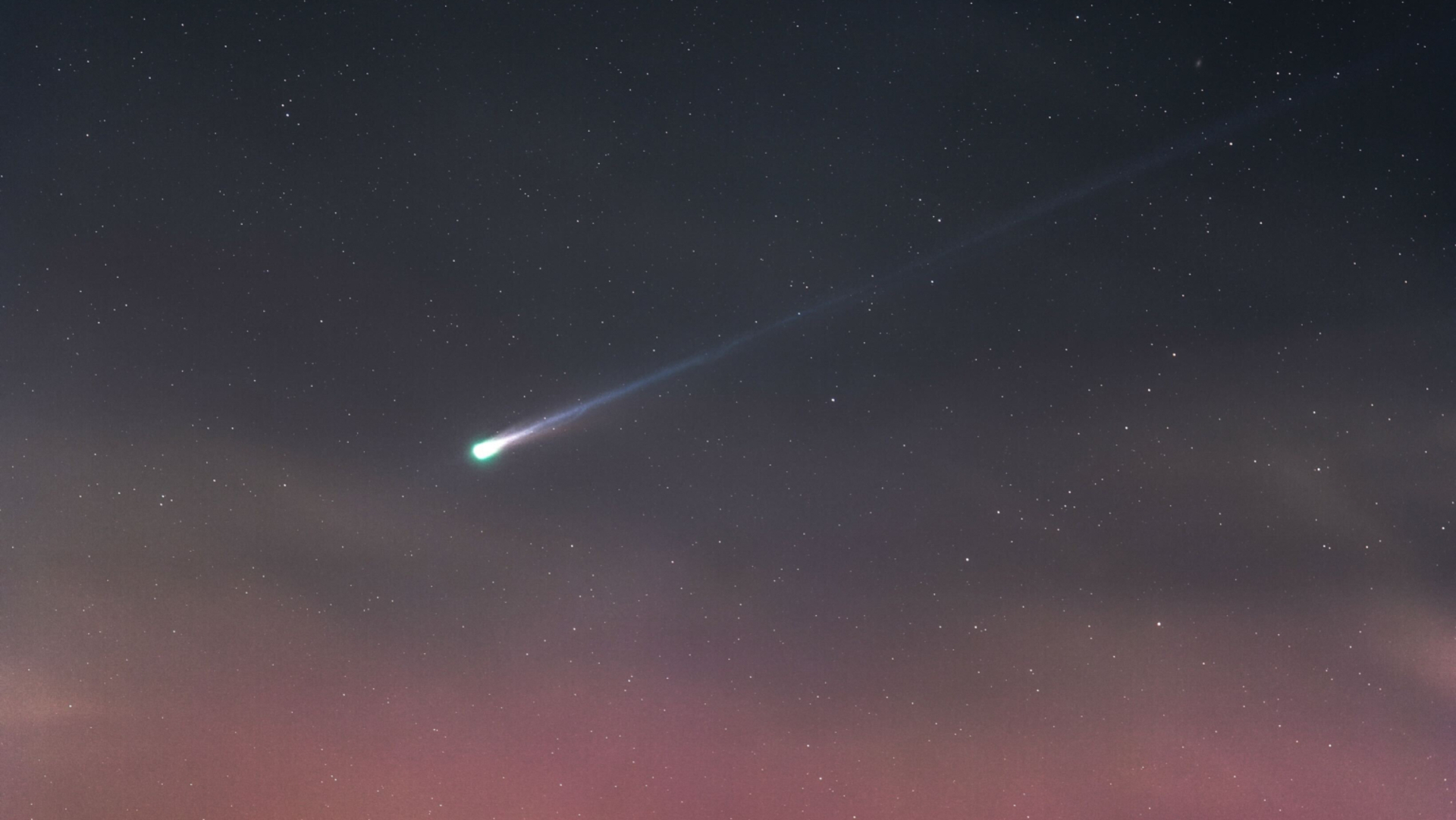First Asteroid Companion of Earth Discovered at Last

The first in a long-sought type of asteroid companion to Earth has now been discovered, a space rock that always dances in front of the planet along its orbital path, just beyond its reach.
The asteroid, called 2010 TK7, is nearly 1,000 feet (300 meters) across and currently leading the Earth by about 50 million miles (80 million kilometers).
The asteroid is the first in a category known as Earth's Trojans, a family of space rocks that could potentially be easier to reach than the moon, even though its member asteroids can be dozens of times more distant, researchers said. Such asteroids, which have long been suspected but not confirmed until now, could one day be valuable destinations for missions, especially loaded as they might be with elements rare on Earth's surface, they added. [Photo and orbit of Asteroid 2010 TK7]
To imagine where Trojan asteroids are, picture the sun and Earth as being two points in a triangle whose sides are equal in length. The other point of such a triangle is known as a Trojan point, or a Lagrangian point after the mathematician who discovered them. The sun and Earth have two such points, one leading ahead of Earth, known as its L-4 point, and one trailing behind, its L-5 point.
The sun and other planets have Lagrangian points as well, and asteroids have been seen at those the sun shares with Jupiter, Neptune and Mars. Scientists had long suspected the sun and Earth had Trojans as well, but these companions would dwell mostly in the daytime sky as seen from Earth, making them largely hidden in the sunlight.
Now, with the aid of the Wide-field Infrared Survey Explorer (WISE) satellite launched in 2009, astronomers have discovered Earth's first probable Trojan, a rock that spends its time at the sun-Earth L-4 point.
Earth's first Trojan asteroid
Breaking space news, the latest updates on rocket launches, skywatching events and more!
Asteroid 2010 TK7 has a bizarre, chaotic orbit.
Trojan asteroids typically do not orbit right at the Lagrangian points but in tadpole-shaped loops around them, due to the gravitational attraction of other bodies in the solar system. However, 2010 TK7's tadpole orbit is unusually large, at times taking it nearly as far as the opposite side of the sun from the Earth. [Photos: Asteroids in Deep Space]
"This one has behavior much more interesting than I thought we would find," study co-author Martin Connors, an astronomer at Athabasca University in Canada, told SPACE.com. "It seems to do things not seen for Trojans before. Still, it had to have some kind of extreme behavior to move it far enough from its Lagrangian point to get within our view."
Connors and his team began their search for an Earth Trojan using data from WISE's asteroid- and comet-hunting project, called NEOWISE, named after Near-Earth Objects and WISE.
The WISE telescope scanned the whole sky in infrared light from January 2010 to February 2011, a hunt that resulted in two candidates, one of which, 2010 TK7, was confirmed to be an Earth Trojan after follow-up observations at the Canada-France-Hawaii Telescope on Mauna Kea, Hawaii.
The researchers have calculated the asteroid's orbit well enough to understand where it will be over the next 10,000 years — 2010 TK7 will not approach Earth any closer than 12.4 million miles (20 million kilometers), which is more than 50 times the distance from Earth to the moon.
"It's as though the Earth is playing follow the leader," said Amy Mainzer, the principal investigator of NEOWISE at NASA's Jet Propulsion Laboratory, who was not a part of the study. "Earth is always chasing this asteroid around."
The fact that 2010 TK7's behavior is chaotic enough to take it quite far from its rather stable Trojan point suggests it is only marginally trapped there, having perhaps only recently been disturbed from its original position. The researchers will run more computer models of its orbit to find out what happened, Connors said.
Asteroid 2010 TK7 may be the first confirmed Earth Trojan asteroid, but there are several space rocks known to exist in relatively stable orbits in our planet's neighborhoods. They include asteroids Cruithneand 2010 SO16, which have vast horseshoe-shaped orbits, and at least two others. But none of these other asteroids have been conformed to be Earth Trojans.
Still much unknown
So far 2010 TK7 does not have a formal name. "Its orbit needs to be nailed down before a name is considered, so it'll take a couple of years more observations before the WISE team can give it one," Connors said.
No color information of it is at yet available of 2010 TK7 to shed light on its composition. In principle asteroids could have a similar makeup to Earth's, but since they are smaller they would have cooled down faster, meaning that heavier substances would not have had time to sink to their centers as they did on our planet.
As such, elements that are uncommon on Earth's surface might be more accessible on asteroids.
"We could be mining these things one day," Connors said.
Unfortunately, 2010 TK7 is not a good target because it travels above and below the plane of Earth's orbit, which means it would require large amounts of propellant to reach. However, if other Earth Trojans do exist, they could prove more accessible.
Now that the researchers have found one, "it makes you want to wonder if there are any more," Connors said. He noted hopefully the Panoramic Survey Telescope and Rapid Response System (Pan-STARRS) array of telescopes and cameras aimed at detecting near-Earth objects could turn more up.
The scientists detailed their findings in the July 28 issue of the journal Nature.
Follow SPACE.com contributor Charles Q. Choi on Twitter @cqchoi. Visit SPACE.com for the latest in space science and exploration news on Twitter @Spacedotcom and on Facebook.
Join our Space Forums to keep talking space on the latest missions, night sky and more! And if you have a news tip, correction or comment, let us know at: community@space.com.

Charles Q. Choi is a contributing writer for Space.com and Live Science. He covers all things human origins and astronomy as well as physics, animals and general science topics. Charles has a Master of Arts degree from the University of Missouri-Columbia, School of Journalism and a Bachelor of Arts degree from the University of South Florida. Charles has visited every continent on Earth, drinking rancid yak butter tea in Lhasa, snorkeling with sea lions in the Galapagos and even climbing an iceberg in Antarctica. Visit him at http://www.sciwriter.us

